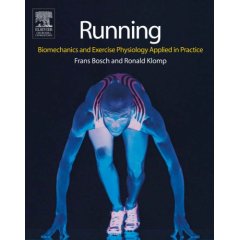
Simon wrote to me concerning the BK Method: “I've got a lot out of reading your columns, so would love to know what you think is so good about these guys' work.
Apart from the fact that I'm not convinced the kangaroo is a particularly apt model for human running, I can't see anyone in middle/long distance running of any note who is using this method -- for example Gebreselassie, Tergat, Kosgei -- you name it.
Holland/The Netherlands is not exactly a world leader in distance running, so I don't find any of this "blurb" a very convincing reason to buy the DVD.”
Simon, you are making the same mistake many of his made. Never judge a book by its cover and do not always judge by results. Perhaps the confusion comes from calling it the BK Method; I think it would be better termed the BK Paradigm of Running. The Kangaroo and animal locomotion are great sources of information for bettering human locomotion. (Read Principles of Animal Locomotion by R. McNeilll Alexander) I recommend you read the book before making further judgment. Here are two coaches, who are also sports scientists who went out on a limb and looked at running a bit differently. The whole issue of stiffness is explored quite. Also the mechanics that they speak about are what great runners do. They have put this in context. After you read the book and have questions email them to me. I am going to meet the authors in Holland in October. Also a further affirmation is when someone like Gary Winckler, the greatest sprint and hurdle coach in the world, thinks there is something there I listen.



3 Comments:
very good book ! A real 'must'
Robbie Billen (physiotherapist/coach T&F)
Belgium
I guess everyone interprets the book in their own way. To me, BK are not reinventing the wheel, like the Pose method. What I got out of it is, the longer you spend on the ground, the more things can go wrong. They emphsise the importance of creating "stiffness" to take advantage of neural factors. I don't know, look at all of the injuries that are caused by spending too much time in the force reduction/pronation phase. It makes sense to me.
"... and do not always judge by results" ????????????
Vern, you MUST explain that one to me.
Read your own comments on the lethargy-provoking soccer warm-up; it's because too many of us have got into the habit of NOT judging by results, that we have adopted habits that do not benefit us.
The original post I commented on was about the DVD you are promoting; I didn't know there was a book as well.
Simon.
Post a Comment
<< Home